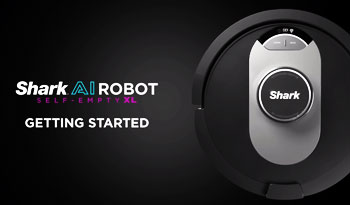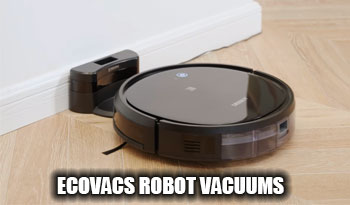Robot vacuums have gone from novelty to household staple, making cleaning floors an automated breeze. Two of the top consumer brands for robovacs are Shark and Ecovacs.
But which manufacturer makes the better robot vacuum? In this detailed comparison, we’ll examine key factors like cleaning performance, navigation, features, design and value across popular Shark and Ecovacs models. Let’s dive in!
A Brief Comparison Table
| Feature | Shark | Ecovacs |
| Suction Power | Up to 1500Pa | Up to 2600Pa |
| Navigation | Visual mapping, basic bump avoidance | Laser mapping, 3D obstacle avoidance |
| Voice Control | Alexa & Google Assistant | Alexa & Google Assistant |
| Self-Empty | Some models | Some high-end models |
| Mopping | No | Yes on select models |
| Design | Techy functional look | Low-profile “appliance” look |
| Pricing | $200 – $600 | $200 – $900+ |
Overview of Shark Robot Vacuums
Known for its upright vacuums, Shark also makes a popular line of robot vacuums. Some defining features of Shark robovacs:

- Powerful suction up to 1500Pa to deep clean carpets and floors
- Self-empty base options on some models to hold weeks of debris
- Lidar and camera navigation for efficient cleaning
- WiFi and app control with Alexa/Google Assistant support
- Mapping with options for room dividers and no-go zones
- Compact designs under 4″ tall for under-furniture reach
Shark focuses on thorough cleaning and convenience features in an accessible package. Models like the AI Ultra, IQ, and RV1001AE provide great robovac value.
Overview of Ecovacs Robot Vacuums
Another robot vacuum leader, Ecovacs offers advanced features and high-end models like:
- Powerful 2600Pa suction with included auto-empty station
- Laser-based dToF technology for precise room mapping
- Carpet detection and auto-boost suction
- Mopping add-on for vacuuming and mopping in one pass
- Alexa and Google Assistant support plus smartphone control
- Height under 3″ to clean under most furniture
With flagship models like the T8 AIVI and Deebot Ozmo 950, Ecovacs focuses on innovative navigation and cleaning for discerning homeowners.
Also Read: Is Electrolux Better Than Dyson?
Key Differences Between Shark vs Ecovacs
Now let’s see how Shark and Ecovacs robovacs compare across the cleaning performance, features and convenience buyers care about most.
1. Cleaning Power
Arguably the most important metric for any vacuum is sheer dirt-sucking ability. Here’s how Shark and Ecovacs models stack up:
- Many Shark robovacs provide up to 1500Pa of suction power – enough for deep cleaning low and medium-pile carpets. Hard floors also come out spotless.
- The strongest Ecovacs models boast up to 2600Pa of suction. This lets them tackle even plush carpets for a sparkling clean floor.
- For sticky messes and dried debris, Shark integrates a motorized brush roll in some models which is great for pulling up clingy particles. Ecovacs opts for silicone rubber brushes on premium models.
- Shark offers a large dustbin so you empty less often. But Ecovacs counters with auto-empty stations on some robots to hold 30+ days of debris.
For raw cleaning power, Ecovacs wins thanks to 2600Pa max suction exceeding most Sharks. But Shark still impresses, especially at lower price points.
2. Navigation and Mapping
How intelligently a robot vacuum maps your home and navigates is critical for cleaning efficiency:

- Entry-level Shark models use basic bump-and-go navigation. But AI and IQ models add camera-based visual mapping for structured cleaning.
- Ecovacs uses advanced dToF laser mapping on high-end models to create detailed floor plans and identify objects. This enables methodical room-by-room cleaning.
- Both brands support mapping multiple floors. But Shark lacks the robust keep-out zone definition and labeling capabilities that Ecovacs provides.
- Through their apps, Shark and Ecovacs enable monitoring progress remotely. But Ecovacs gives you more control to manually drive and adjust the route.
For pure navigation smarts, Ecovacs comes out ahead with more advanced laser mapping and navigation algorithms for more efficient coverage. But Shark still navigates sufficiently well.
3. Convenience Features
Both brands pack conveniences like scheduling, auto-recharge, and voice control:
- With Alexa and Google Home support, you can start cleaning or send Shark and Ecovacs robots to another room with just your voice.
- Using the mobile app, you can set cleaning schedules and monitor run status for both brands. Ecovacs also lets you customize each run’s suction power.
- When power runs low, all models automatically return to their charging base. Some Sharks can even empty their own dustbins into the base so you don’t have to empty for weeks.
- Shark offers useful extras like a handheld vacuum mode to clean corners and tight spaces. But mopping attachments are only found on certain Ecovacs models.
For features, it’s close but Ecovacs models like the T8 AIVI with its auto-empty station provide the most comprehensive combination out of the box.
3. Obstacle Avoidance
To avoid damaging furniture or getting stuck, robovacs use sensors to detect and maneuver around obstacles:
- Most Shark robots rely on basic bumper sensors and camera-based object detection. This prevents collisions but allows grazing furniture.
- The most advanced Ecovacs like the T8 AIVI combine dToF lasers and 3D sensors to “see” objects from a distance enabling smoother avoidance.
- Both brands come up short compared to iRobot’s more advanced mapping and navigation capabilities to avoid entanglement hazards completely.
For pure obstacle evasion, Ecovacs again has an edge particularly on premium models. But Shark detecting and route planning isn’t bad for the price.
4. Design and Aesthetics
While not a dealbreaker, design plays a role in blending robovacs into home decor:
- Most Shark robots have a distinctly techy look with prominent cameras and hallmark Shark logo. Glossy finishes attract dust.
- Certain Ecovacs models like the Deebot T8 sport a stealthier matte aesthetic more akin to an appliance than gadget. Screaming branding is minimized.
- For under-furniture reach, both brands get very low – under 3″ for Ecovacs and around 3.5″ for Shark.
- Shark robots come in a limited gray/black palette compared to funkier Ecovacs colors like golden crystal on the N8 Pro+.
If looks matter, Ecovacs models offer slightly sleeker, more low-profile designs and fun colors versus Shark’s function-over-form approach.
Watch This Review Video:
5. Overall Value
With the features above considered, here’s how Shark and Ecovacs compare on price:
- Shark robovacs start around $200 for no-frills entry level models but go up to $600 for the self-emptying AI Ultra.
- Ecovacs pricing also starts around $200 for basic models but ranges up to $900+ for the flagship Deebot T8 AIVI with 3D obstacle avoidance and auto-empty station.
- You pay a bit of a premium for Ecovacs but get stronger suction, smarter mapping and obstacle avoidance. Shark offers great cleaning for the money.
For the price, Shark robots like the RV1000 may make the most sense for buyers wanting solid robovac performance on a budget. But Ecovacs wins for high-end autonomous cleaning.
Also Read: Is Sirena Better Than Dyson?
Frequently Asked Questions (FAQ)
Yes, Ecovacs makes some of the best performing robot vacuums available today. Models like the Deebot T8 AIVI offer powerful 2600Pa suction, precise home mapping, and 3D obstacle avoidance. Ecovacs competes with iRobot for the most advanced autonomous cleaning.
Shark robot vacuums compete well with entry-level Roombas on suction power and mapping intelligence at a more affordable price point. But advanced navigation and software features of high-end iRobots like the S9+ still have an edge over Shark models overall.
It’s close, but Ecovacs takes the edge for its superior navigation technology like dToF laser mapping and reactive AI for avoiding obstacles. But Roborock offers models with just as strong suction at a lower cost. For pure cleaning, Roborock competes well with Ecovacs.
Compared to basic Roombas, Shark robots can provide stronger cleaning at a comparable or lower price point. But advanced iRobot navigation gives Roombas an edge for cleaning efficiency and automation. Shark competes well on price while iRobot wins on high-end features.
So in summary, while companies like iRobot and Roborock give them serious competition, both Shark and Ecovacs robot vacuums stand as excellent options known for great cleaning performance and useful features.
Also Read: Differences Between Yeedi Vac 2 Pro And Roborock s7
Final Thought
To conclude, here are some general guidelines for choosing between Shark and Ecovacs for your next robot vacuum:
Shark is the better choice if you:
- Want powerful vacuum cleaning at an affordable price
- Don’t need complex mapping and navigation
- Prefer a simple app with limited controls and customization
- Want integrated self-emptying capabilities
Pick Ecovacs if you:
- Demand the strongest suction for deep carpet cleaning
- Love using laser mapping and custom no-go zones for efficiency
- Appreciate high-end design with minimalist aesthetics
- Want mopping functionality included on select models
Both Shark and Ecovacs make excellent robot vacuums that outclean basic random navigating models. Pick Ecovacs for smarter luxury cleaning or Shark to maximize value.
